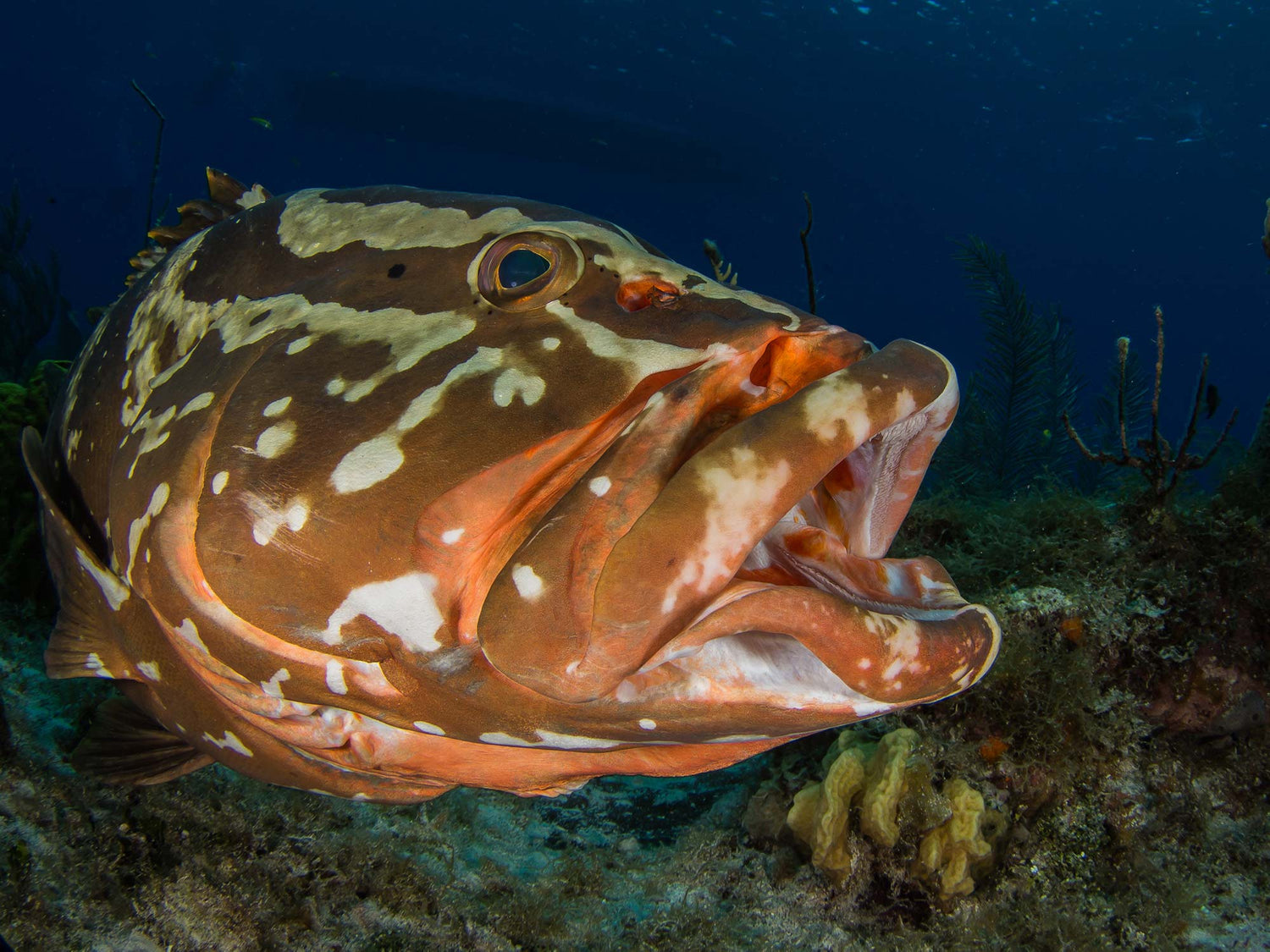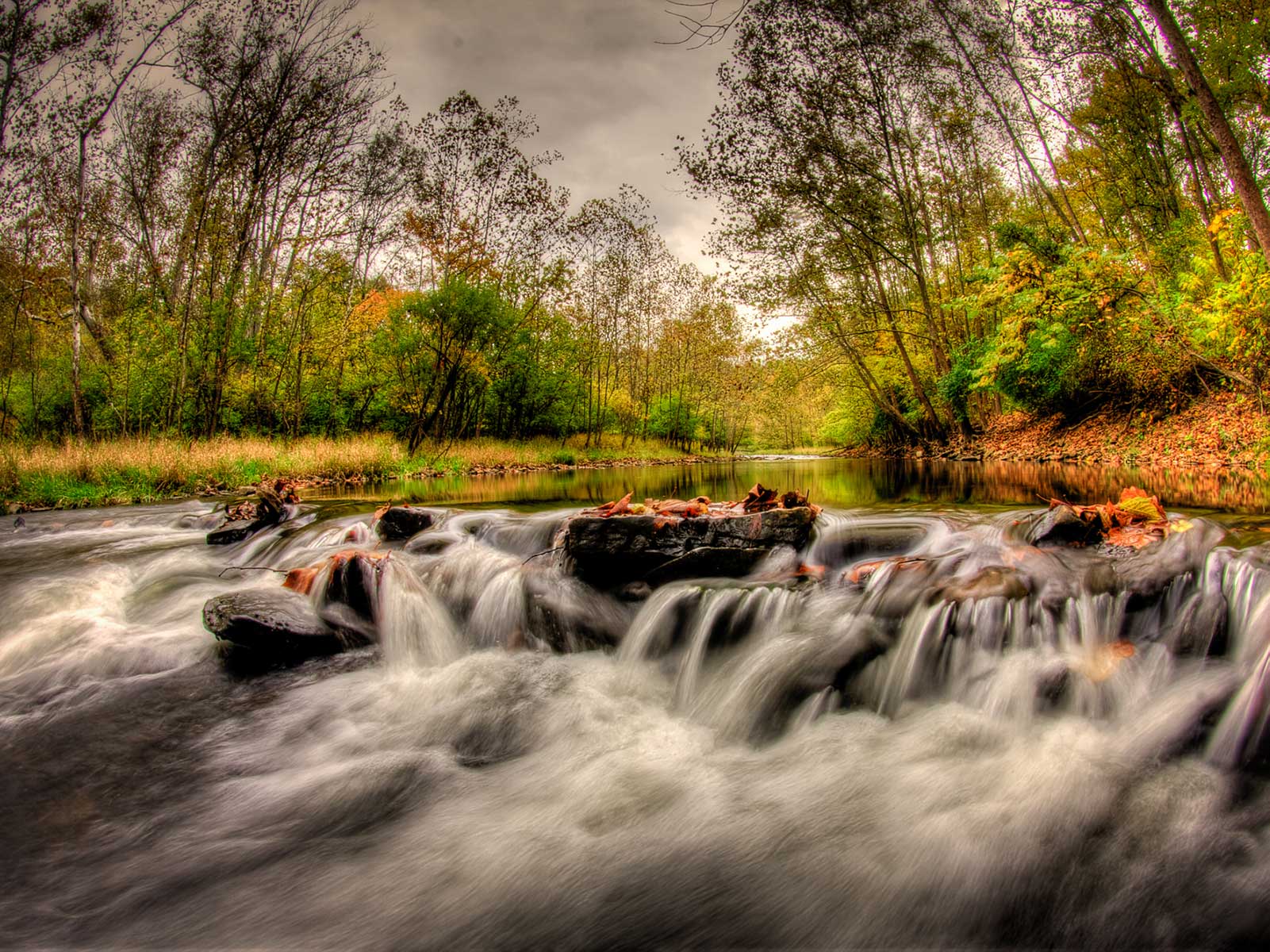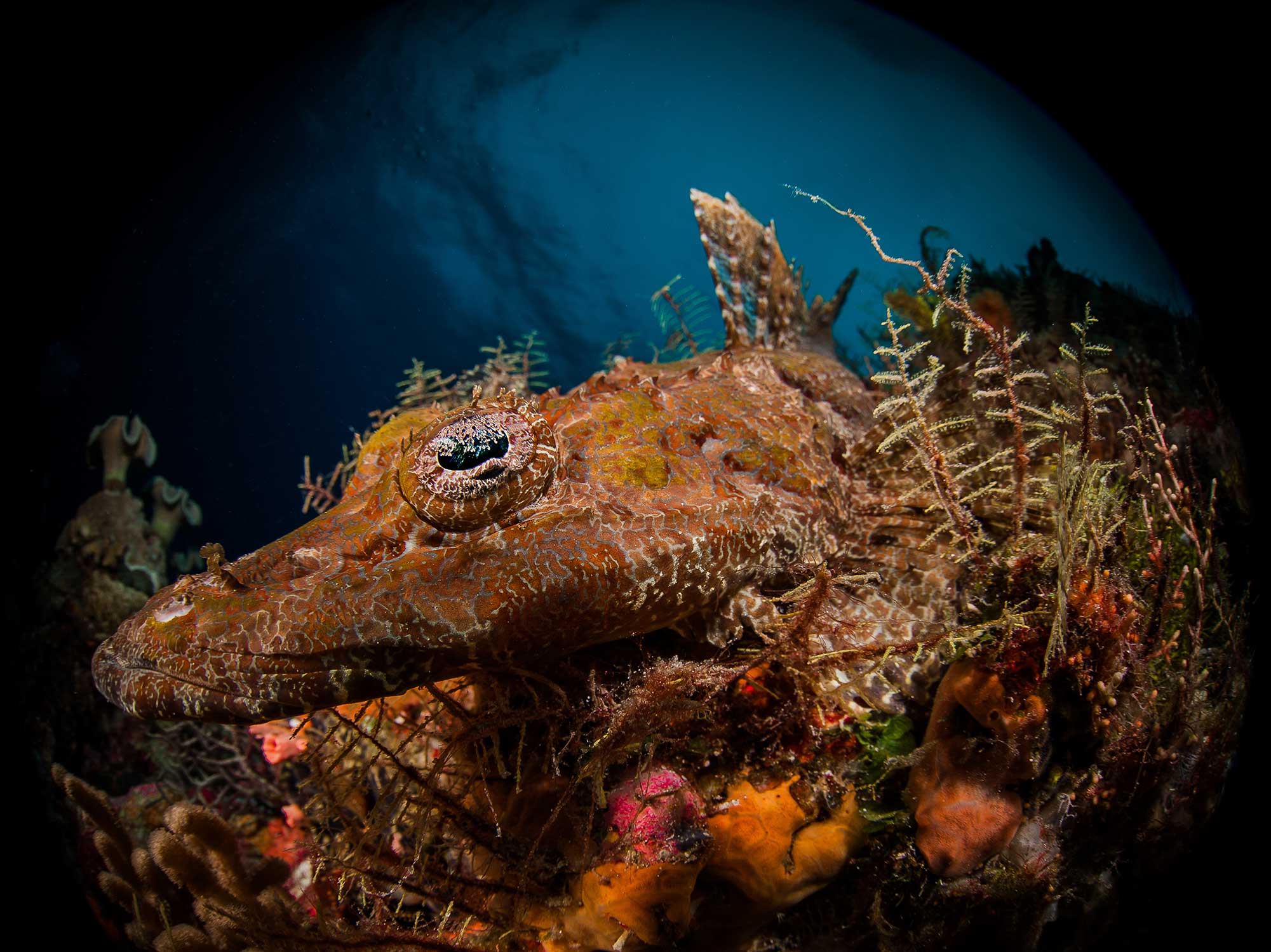Spend a week diving the reefs of Little Cayman and you probably won't order grouper at a restaurant again. These large fish will not only approach you, they will even try to come in contact with you. When you look into their large eyes, they seem to be trying to convey a message. They are. The message is: We should hunt together.
We have watched them follow large eels across the reef, trying to spook small reef fish out of their coral caves. They will do the same thing with divers, hoping for a spooked reef fish to come close enough to grab. When you set up to capture an image, the grouper will often swim around the back side of the coral trying to find the back door that small fish might exit from. With their unique markings and social nature grouper are a ton of fun to photograph.

F-16 • 1/160 • ISO 100 © Steve Miller
Where
Grouper is a name applied to various species of sea bass. In the Caribbean, there are diving areas that have been protected for so long that the grouper residing on the reefs show no fear of divers or cameras - in fact, they will swim to you and even follow you on your dive. One of our favorite places for this is Little Cayman.
DSLR + Mirrorless
ISO: 200 to 400
Mode: Manual
Aperture: Variable through whole range, depending upon how dark or light you wish your background to be. Start with F-8 if you aren't sure, then change after previewing your image.
Shutter Speed: 1/125 to 1/160 flash synch.
Lens: 8mm to 100mm. Face shots and eyeball shots are beautiful, even a section of their skin or lips can make nice image. But for the big ones it's nice to have a super wide zoom lens - particularly fisheye.
Point + Shoot
ISO: 100 to 200
Mode: Manual or Aperture Priority. If you are shooting natural light, Program will work as well.
Aperture: Full range depending on sun in your frame.
Shutter Speed: 1/125 to 1/200
Lens: Full wide angle with or without a wide angle wet lens.

You won't have much trouble getting a Close Focus Wide Angle shot of a grouper, their inquisitive nature means they'll enjoy getting close to your dome port. F-18 • 1/160 • ISO 100 © 2022 Steve Miller
Technique
Grouper will gaze into your dome port, less than an inch away. This can make for very sharp images, since very little water will be between the lens and the fish. Keep this in mind when positioning your strobes and selecting a lens to use. For fast focus and an extreme depth of field, fisheye lenses excel. This is one of the few times that a wild animal will be such a cooperative subject. As you shoot, remember that the frames with the most severe upward angle will reward you with the gradient of light from the surface, your background will be brighter and more saturated with these angles.
Strobes
Generally, we like to position our strobes away to minimize scatter in the frame. If you are shooting from a few inches away, you will need to point the strobes inward, or the center of their face will be in shadow.

F-10 • 1/125 • ISO 100 © 2022 Steve Miller
Want the easy way to improve your underwater photography? Sign up for our weekly newsletter for articles and videos directly in your inbox every Friday:
Additional Reading
Close Focus Wide Angle In Depth
Why You Need a Fisheye Lens Underwater
Turtle Photography Underwater Camera Settings
Just Below the Surface | Shooting on Snorkel in Grand Cayman













